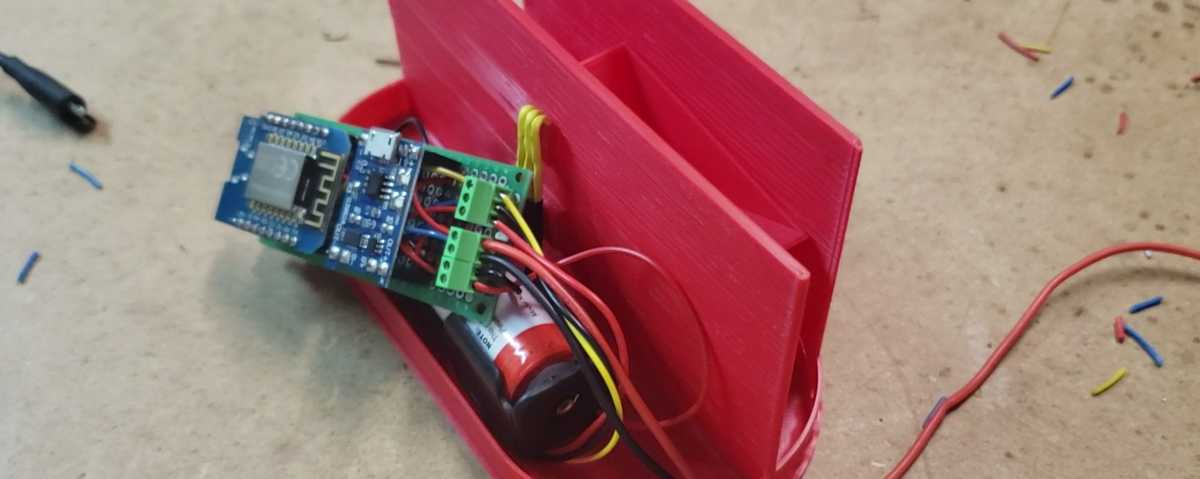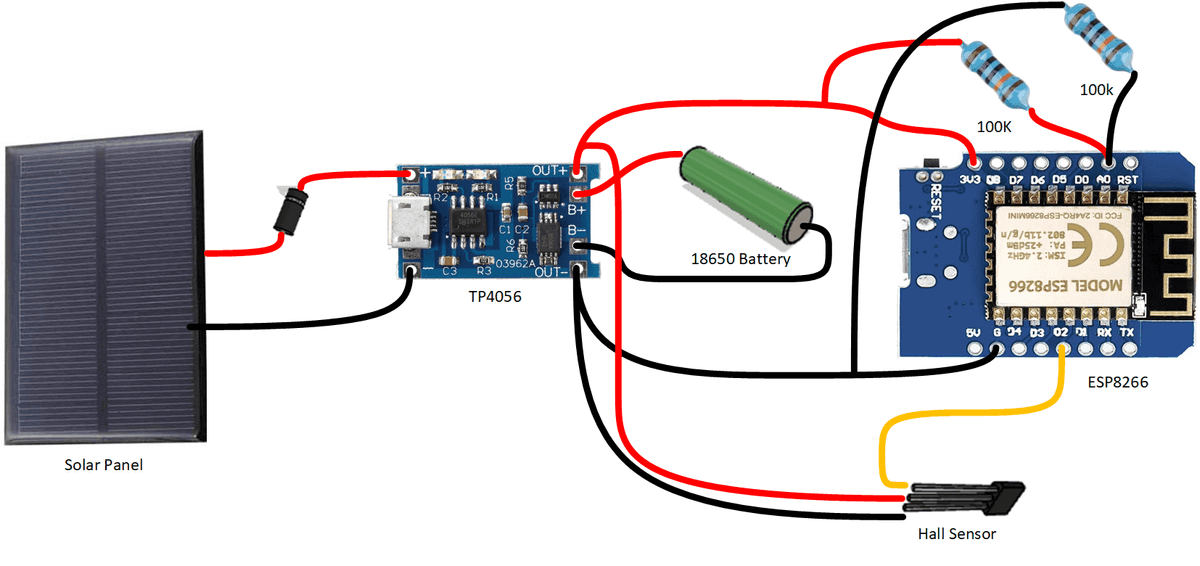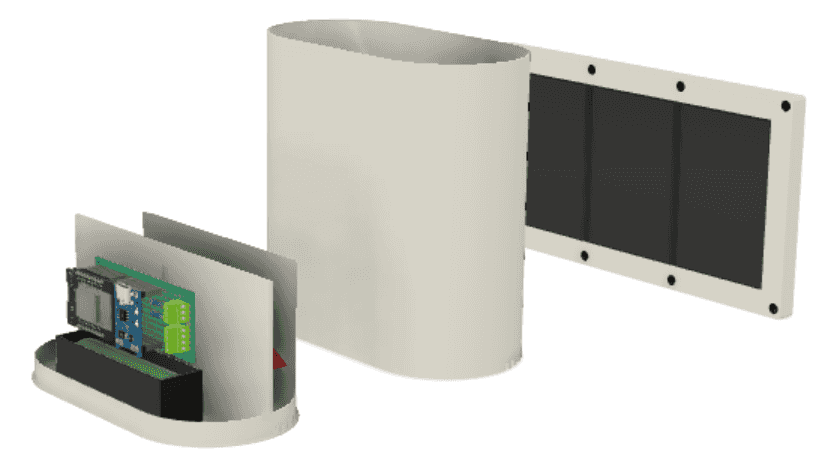
Rain Gauge
Status: Draft
Overview
Weather geek? Maker? These are fun. A tipping bucket rain gauge funnels rain into a cup which tips and empties repeatedly during a rain storm. Each "tip" correlates to a specific amount of rain. Count the tips, you'll know how much rain has fallen.

The tip cup has a magnet at the top. The rain gauge base has a Hall effect sensor. Each time the magnet passes the the sensor, the sensor sends a signal to the ESP8266. This rain gauge only sends the tips to the API. All business logic, or calculations are done on the server side.
There are a few ways to calibrate the gauge. The easiest way is to place a cup (must have straight sides and bottom) next to the gauge. After a rain storm, measure the rain in the cup and the number of tips registered by the gauge. Another way is straight math. The area of the mouth of the gauge is 13.5601262 square inches. Which means, one inch of rain would be 13.5601262 cubic inches. Can someone smarter than me check my math? Count the tips while dumping that amount of water into the gauge. The number of tips would be the "tips per inch" number. 1 divided by the tips per inch would yield the amount of rain for each tip.
After calibrating this one, it produces 55 tips per inch. So, one tip equates to about 0.018 inches of rain. If there's a rain storm and the gauge registers 8 tips, the amount of rain would be 0.145 inches of rain.
Links
| Desc | Link | |
|---|---|---|
| GitHub | STLs, source code for the ESP8266, etc. | https://github.com/tallman5/rain-gauge |
| BOM | List of parts required for full build | https://github.com/tallman5/rain-gauge/blob/main/rain-gauge-bom.md |
| Fusion Model | The STLs in GitHub are the "production" version. The Fusion model may have changes which have not been tested. | https://a360.co/3bst4iC |
The Build
Electronics

Printed Parts
